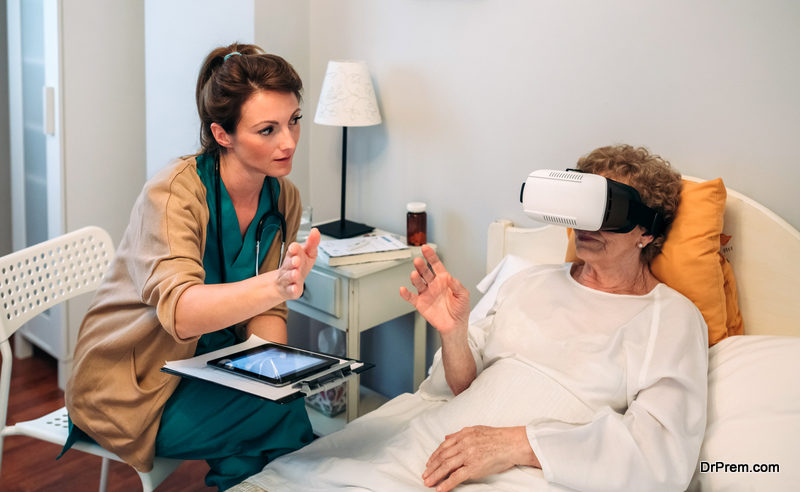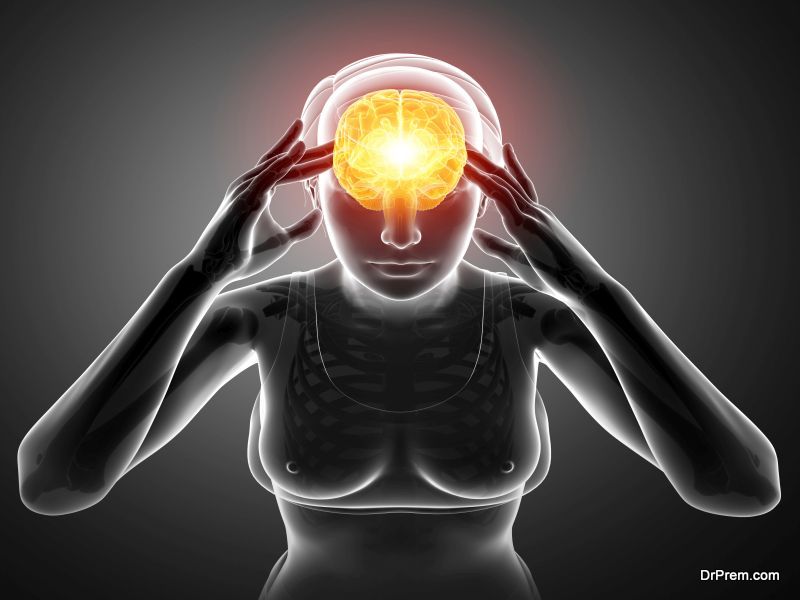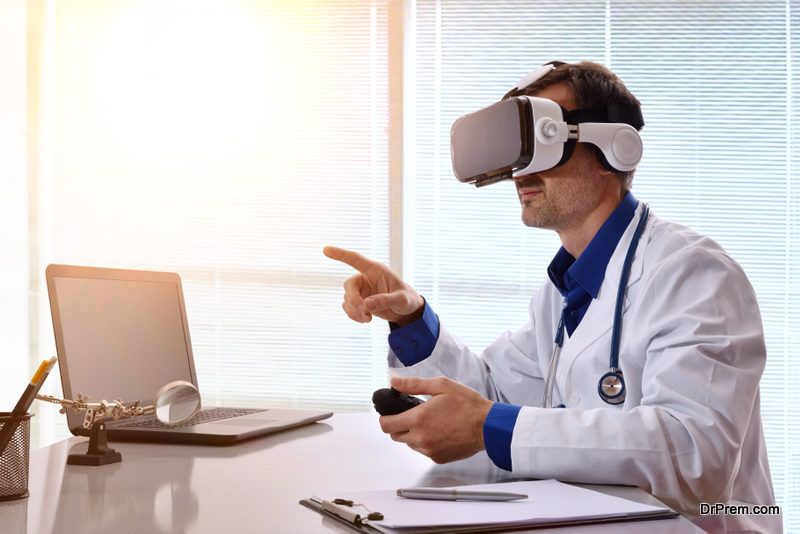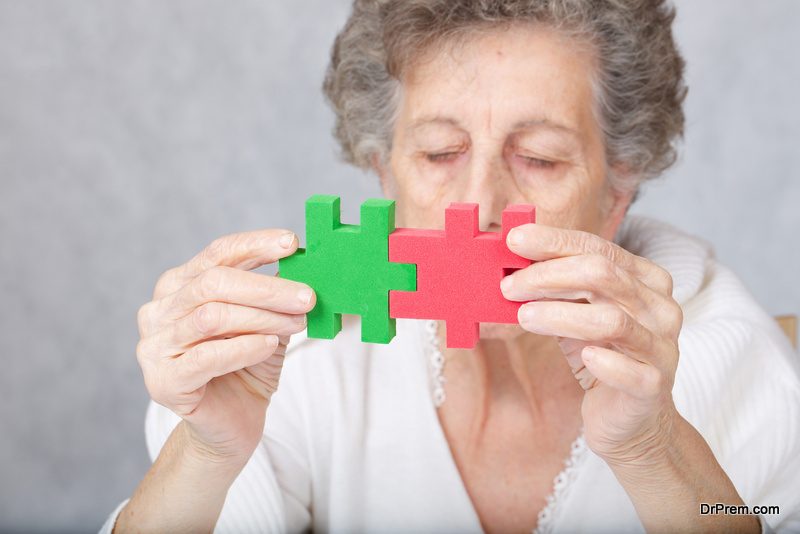In a world where the digital evolution is well underway, most industries are making significant changes to the way they’re operating in order to keep up with expected standards.
 Though the healthcare industry has always seen a level of innovation, with equipment, policy changes, and improved patient care, it’s no secret that other industries have viewed it as one that severely lacks behind the rest.
Though the healthcare industry has always seen a level of innovation, with equipment, policy changes, and improved patient care, it’s no secret that other industries have viewed it as one that severely lacks behind the rest.
The unfortunate truth is that many healthcare organizations around the world are the first to stand out and be the ones to pioneer change.
Many would rather stick to what’s already out there, following the mantra ‘if it’s not broken, why fix it?’ like a prison sentence.
Thankfully, however, more and more established and startup companies are beginning to see the benefits of upgrading and advancing technology to meet the needs of the modern patient.
According to Digital Authority Partners, the decision of healthcare companies to become pioneers in the digital revolution could save the sector over $300 billion.
One of the digital innovations that could revolutionize the healthcare industry and help contribute to massive savings is VR technology.
 Originally created for gamer geeks, the last two decades have seen a massive shift, with virtual reality now a popular option for lots of different verticals within the healthcare industry especially when coupled with medical devices & software.
Originally created for gamer geeks, the last two decades have seen a massive shift, with virtual reality now a popular option for lots of different verticals within the healthcare industry especially when coupled with medical devices & software.
Research studies have come and gone and provided us with a lot of successful treatment options that are used in hospitals today.
With that in mind, we thought we’d take this opportunity to share some of the VR innovations that are going to transform healthcare in 2019 with you today.
Virtual Reality Can Be Used As Pain Relief
 A French startup company called Healthy Mind recently started on a mission to bring augmented reality headsets into the emergency room so that they can help to relieve pain.
A French startup company called Healthy Mind recently started on a mission to bring augmented reality headsets into the emergency room so that they can help to relieve pain.
Using their VR goggles, patients have a choice of the 3D natural realistic environment they are transported to, with options ranging from a Japanese garden to a snowy hill.
The high-quality images seen through the goggles, and the hypnotizing sounds, work together to induce a state of deep relaxation. This causes the parts of the brain that recognize pain to be less active when people are fully immersed in the experience, making it easier for patients to deal with pain and receive treatment for any injuries.
As well as being an effective way of targeting the opioid crisis we’re currently experiencing in the US, this treatment has also seen positive results on amputee’s.
A selected number of amputee patients who have experienced phantom pain in the area where they’re missing a limb have been offered the opportunity to control a virtual version of their missing limb using virtual reality headsets.
Although this isn’t a mainstream treatment yet, those who have used it have reported feeling less pain. They have also found that they can endure more intensive physical therapy before their injury site becomes painful using virtual reality, too.
VR Can Treat Stroke Patients

Patients who have had strokes often report significant weaknesses in the side of their body that has been affected, and require significant and taxing physical therapy to help them regain strength and control of these limbs.
The main treatment for strokes involves mass practice, task-orientated arm training of the upper and lower limbs to help the brain reprogram itself and form new neural connections. The idea is that these connections will help stimulate the recovery of motor skills in patients.
Using virtual reality, healthcare professionals can augment the rehabilitation of the upper and lower limbs in patients who have suffered from a stroke.
This is done by therapists manipulating the image on the VR screen to make it appear as if the patient’s limbs are moving faster and more accurately than they are in real life.
It has been proved that doing this gives patients the confidence to start using their affected limb more spontaneously, giving them greater chances of regaining full function of the weaker limbs.
VR helps with Doctor Continuous Education
 Advance virtual reality training modules specifically created by Johnsons & Johnson’s have been designed to give doctors, specifically surgeons, access to a convenient and totally safe hands-on surgical experience.
Advance virtual reality training modules specifically created by Johnsons & Johnson’s have been designed to give doctors, specifically surgeons, access to a convenient and totally safe hands-on surgical experience.
The virtual reality experience involves using a computer station and a VR headset to get as much from said experience as possible.
For surgical training, the system starts participants in a realistic-feeling operating room. After letting them acclimate, which takes around five minutes on average, the system will then guide users through the surgical procedures, showing them how to use various tools.
Participants in this training can also turn the instructions off and repeat the module as many times as they like, or need to, to become comfortable with the procedure.
It is expected that this technology will help reduce the amount of medical professionals making real-world mistakes during surgery by offering them a safe and convenient alternative.
It also provides doctors with a more thorough training experience than they may receive in healthcare organizations, or at medical school. This is because it is updated and modern unlike textbooks, and doesn’t depend on the same variables that may happen in a real life surgery.
VR can help PTSD Patients
 For those who have experienced trauma, like living in a warzone or surviving a car crash, overcoming it and processing what’s happened can both be extremely difficult. This has led to limited success with therapies specifically aimed towards those who suffer with PTSD.
For those who have experienced trauma, like living in a warzone or surviving a car crash, overcoming it and processing what’s happened can both be extremely difficult. This has led to limited success with therapies specifically aimed towards those who suffer with PTSD.
Virtual reality may, however, be a light in the dark for patients who have been unsuccessful with other treatments.
It works by returning the patient to a virtual version of the scene or location where the traumatic event took place.
Essentially, it is an exposure therapy tactic that forces individuals to face their biggest fears instead of listening to their PTSD and avoiding it.
It is performed slowly, and in a therapist’s office, so that they can be monitored and removed from the situation if it becomes too much to handle.
By doing it virtually, the individual is not forced to face the reality of the situation until they are ready or, in the case of a warzone, ever again.
The idea of using virtual reality in this type of therapy is to help people come to terms with their trauma, overcome or reduce the impact of some of their triggers, and be able to move on with their lives in spite of what has happened to them.
Virtual Reality Can Enhance Elderly Care Delivery
 The healthcare industry naturally invests more into younger doctors who have bright futures in the medical field. While this is normally a good thing, it can create a divide between medical professionals and the elderly patients they are often left to treat.
The healthcare industry naturally invests more into younger doctors who have bright futures in the medical field. While this is normally a good thing, it can create a divide between medical professionals and the elderly patients they are often left to treat.
The aging process is one that many people will not understand until they go through it, making it hard for young doctors to truly assess the situation and the impact this has on the elderly person’s life.
With virtual reality technology, however, doctors can be exposed to the aging process by experiencing things like different forms of sight loss that commonly affect older adults.
If a headset is included, this experience may be heightened to include hearing loss, helping the younger medical professionals to understand the experience of an older adult first hand.
Knowing this information will enable doctors and other medical professionals to have more empathy and compassion towards those dealing with the aging process, enhancing the care that seniors receive while in the care of others.
VR and Autism Therapy
 According to the World Health Organization, 1 in 160 children around the world has been diagnosed with an Autism Spectrum Condition. This condition can have a great impact on many parts of an individual’s life, with some requiring life-long care and support, while others are able to live independently.
According to the World Health Organization, 1 in 160 children around the world has been diagnosed with an Autism Spectrum Condition. This condition can have a great impact on many parts of an individual’s life, with some requiring life-long care and support, while others are able to live independently.
There are limited options for autistic children to develop the necessary skills required to live within society, but a new virtual reality therapy might be able to help.
With no negative side effects, virtual therapy is mainly used to improve an autistic individual’s communication and social interaction skills.
Technology companies have been able to do this by creating an environment where virtual reality characters can interact and engage with the autistic individual.
The great thing about this therapy is that the sensory complexity of the virtual environment can be adjusted to cater for the specifics of a child’s condition.
Summary
Virtual reality is something that has continued to gain popularity amongst researchers in the last couple of decades, and if these medical innovations aren’t a signature of what’s to come, then we don’t know what is.
As well as being a vital way of helping patients with very few other options, like in the case of autistic people and those with PTSD, it’s also an invaluable resource for future surgeons of our world.
Furthermore, virtual reality could revolutionize the healthcare industry—in 2019 and beyond—by contributing to large necessary savings in the industry as a whole, allowing vital funds to be put towards other treatments and cure exploration studies.
We’d be super interested in hearing about what you think will be the next virtual reality innovation of 2019, so why not let us know in the comments below?
This article comes from Julian Gnatenco @ JGBiling
Article Submitted By Community Writer




